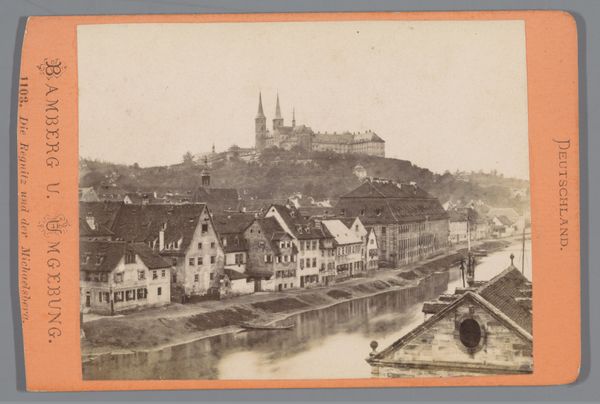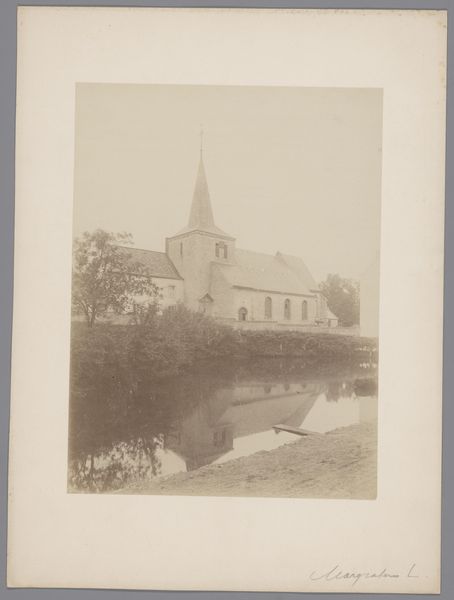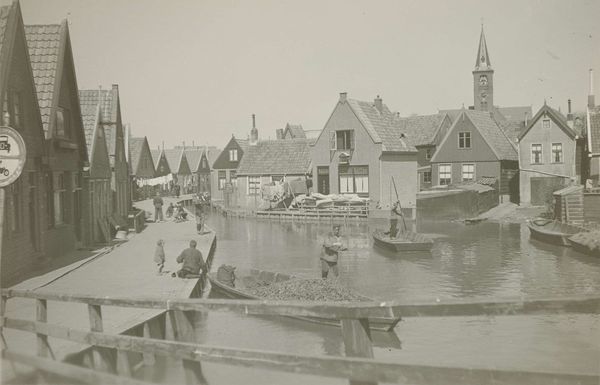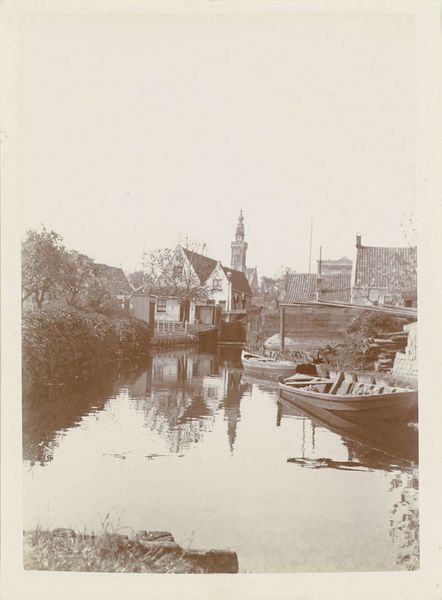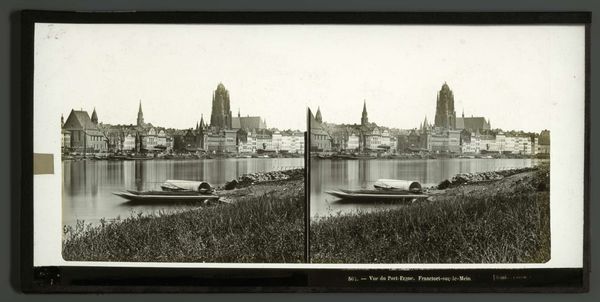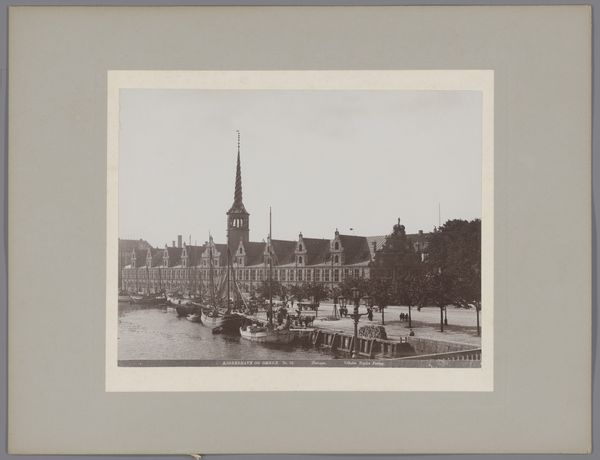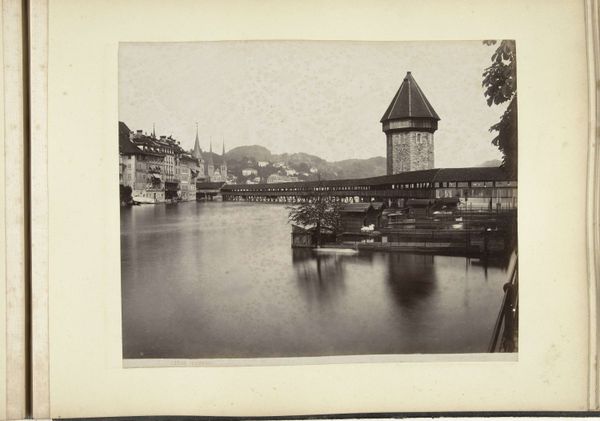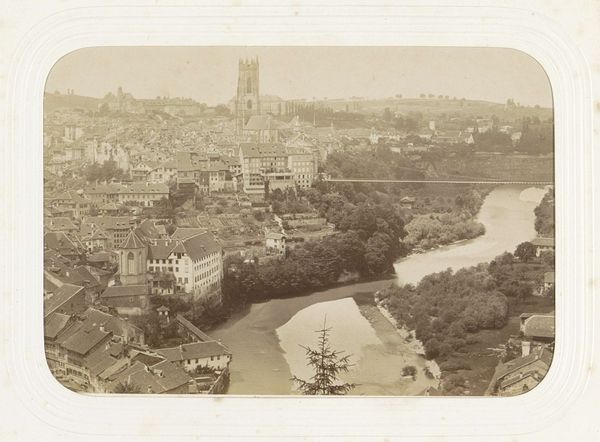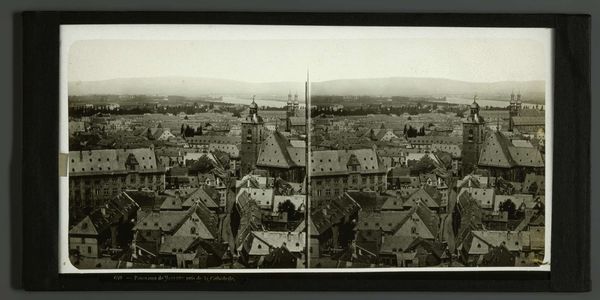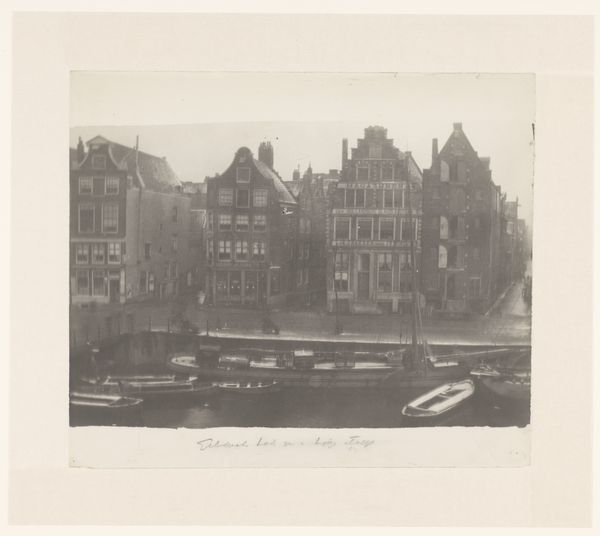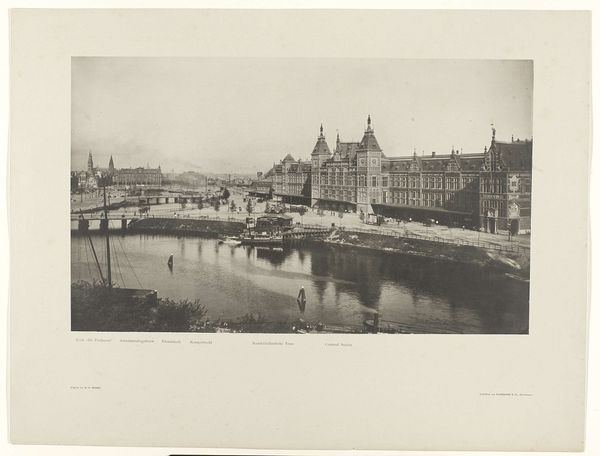
photography, albumen-print
#
16_19th-century
#
landscape
#
photography
#
cityscape
#
albumen-print
#
realism
Dimensions: height 85 mm, width 170 mm
Copyright: Rijks Museum: Open Domain
This stereoscopic photograph, showing a view of Nuremberg across the Pegnitz river, was created by Ferrier Père-Fils et Soulier. This type of image, made using albumen silver print, was popular in the 19th century for its ability to create a three-dimensional effect when viewed through a stereoscope. The albumen process itself is fascinating. It involves coating a glass plate with egg white – yes, the very same ingredient you use in your kitchen! – mixed with salts, then sensitizing it with silver nitrate. The result is a highly detailed negative, from which prints like this one could be made. The stereoscopic process speaks to a desire for immersive experiences, reflecting a broader cultural interest in realism and technology. It also suggests a shift in the consumption of images, from unique artworks to mass-produced views available to a wider audience. Recognizing the hand-made nature of this photographic process – and the labor required – underscores the crucial place of craft within mass media.
Comments
No comments
Be the first to comment and join the conversation on the ultimate creative platform.
